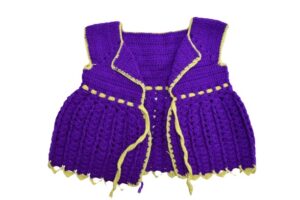The birth of a child is one of the most beautiful events ever in the life of the community. Rituals related to this event are practiced from the prenatal preparatory stage for the birth of the child (pregnancy period), the baby’s arrival until its first anniversary. The scope of activity of the element includes rituals, festive ceremonies, social practices, and verbal habits or skills.
The Childbirth Ritual begins with the preparation for its arrival in life. Tradition has it that the novice mother gives the good news of the pregnancy to her family members, kinfolk, and friends, the very moment she starts to feel it kicking in her belly. During the eighth month of pregnancy, she prepares in advance the first clothes for the expectant baby, such as singlets, underwear, sheets, salister (baby bibs), diapers, towels, bodysuits, socks, hoods, fiqka (envelope-shaped wrap to put the baby in) and anteriçka (vest-shaped clothing with internal straps to fasten the baby). Babies’ innerwear is made of cotton material, while the outerwear ones are made from knitting or crochet. When the baby has decided to come, the novice mother is accompanied by the husband’s family members to the maternity center or hospital, and it is a custom to keep this period of childbearing to themselves as it is believed this keeps the mother from suffering during the birth labor.
The good news of childbirth as known in Albanian: sihariq or myzhdeja, is given by a male with living parents. This is such a joyous moment among family members and relatives. Both families, both on the mother’s side and the young father’s side cook some characteristic dishes symbolizing health and good luck, such as pancakes, bukëvale (by the mother-in-law) which is a type of bread prepared in sweety and salty version, and baklava (by the mother). The first pancake should be eaten by the mother of the newborn baby to proceed with treating kinsmen and friends. Those who receive the pancakes give a coin wishing the child a healthy and safe life. Relatives and friends who go to visit the novice mother should do so during the day while not hugging (kissing on the cheek) the lying-in woman, since otherwise, according to superstitions, the new mother will run out of breast milk. Besides, an amulet is pinned on the newborn baby’s clothes to ward off the “evil eye”.
When the baby first enters the house, it is coated with flour, and given an egg and coin for strength, health, and good luck. On the third day, the child’s name is given, and a happy day is accompanied by a festive ceremony with the husband’s family members. It is still a tradition in a significant part of the community that despite assigning new names, the child’s name is inherited from the grandfather or another relative. During the naming process, a spoon is broken and is left near the child until it is 40 days old. The mother should not leave the house for 40 days after delivery. Once this period is over, both families celebrate vidjet or vigjet (banquet celebrating the baby’s birth), which are accompanied by gifts from both families, such as gold bracelets, various clothes, beds, furniture, and other stuff, and so on. Traditional desserts such as baklava are also served.
After the celebration, the new mother with her baby can go to her parents’ family to stay there for a certain period. Bringing up a child and putting him to sleep is accompanied by songs or verses, known as lullabies, which the child’s mother sings to her baby. Most of them are inherited from family members, or just created by the mother herself calling her little one affectionate words.
Baret cupa vetë, (My sweetie taking a walk)
Trëndafil me fletë, (You, blooming rose)
Borzilok me degë, (Basil exuberantly thriving)
O, moj faqe shegë. (Oh, my pomegranate-like cheek)
When the child gets its first tooth or takes its first steps, the one who first happens to see that moment should make a gift to the child. On the first anniversary of the child, its birth hair is cut and this is joyfully celebrated by the family members. Several objects representing different professions are all shown to the child, to see which one he will choose and supposedly take a hint of what the child will do in the future.






